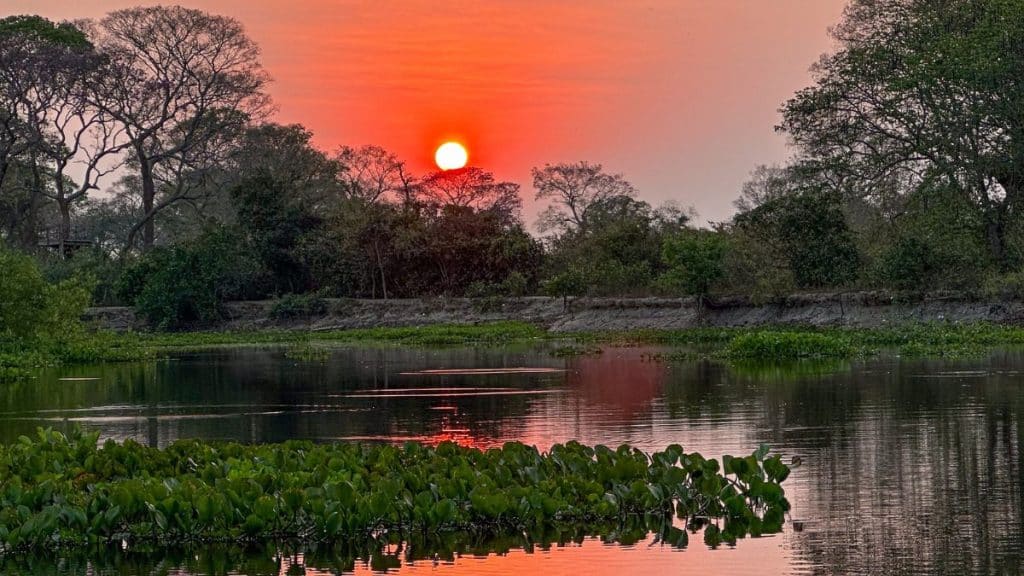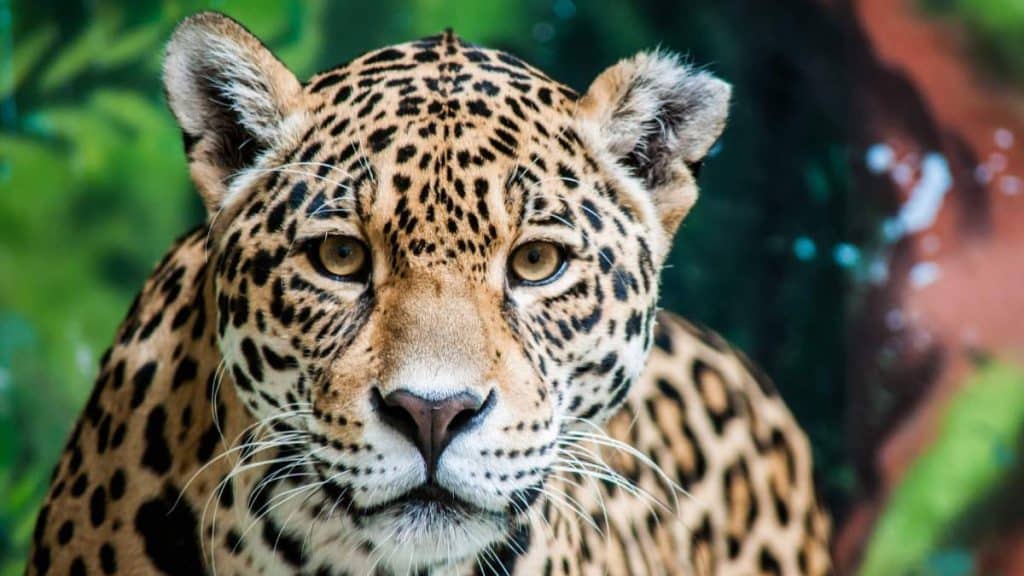The vast region of the Pantanal is a land of transformation, a place that morphs from a dry landscape of dusty horizons to a watery world of lakes, rivers, and marshes that sparkle in the sunshine and gleam under the moon. Living amid such profound natural change, it’s hardly surprising that the indigenous peoples of the Pantanal incorporated magical transformation into many of their myths and legends. In these traditions, both gods and men appear in animal forms and people change into spirits. In other lore, mythical characters take on the traditional folkloric roles of trickster or demon. Some tales are origin stories, telling how things came to be. It’s a rich tradition that also reflects the clash of native and colonial peoples, marrying some elements of Portuguese folk tales with indigenous ones.
About the Jaguar Goddess
Kianumaka-manã is the goddess of freedom, a warrior goddess who has the strength of the jaguar. Indeed, she has the power to transform into a jaguar. She blesses the Brazilian Indians in all their battles. Her Portuguese names translate to “Jaguar Goddess,” “Jaguar Woman,” and “Indigenous Jaguar.” Her myth is a classic transformation story that also carries elements of the hostility between the Pantanal Amerindians and the invading Portuguese settlers.
Kianumaka-manã was once a beautiful young Indian girl named Yndaiá. One day, she and her mother walked near a forest, feeling hungry. Yndaiá told her mother she would go into the forest and bring back meat. The girl warned that when she returned her mother must place a certain branch in her daughter’s mouth. Yndaiá disappeared into the trees and transformed into a jaguar. After killing a rancher’s cow, she returned to her mother in jaguar form, her bloody mouth open. Her frightened mother ran away, unknowingly leaving her daughter as a jaguar. Now called Onca Cabocia, Indigenous Jaguar, she raids ranches by night, killing cattle. Only when the ranchers gave her their branding irons does she stop killing their cows.
The beautiful giant water lily pad
A lovely transformation/origin myth tells the story of one of the most iconic aquatic plants of the great Pantanal marshes. As the legend goes, when the moon shone over the wetlands its goddess, Jaci, visited sleeping tribal villages, kissing and illuminating the faces of the prettiest young virgins. When the moon was hidden, Jaci stole the girls away and turned them into stars to keep her company in the night sky. One beautiful virgin, a girl named Naiá, longed to become a star even though it meant giving up her physical body. Foregoing food and drink, she wandered the hills at night, searching for her beloved moon. One evening she saw its reflection shining in a lake. She dove into the water and drowned. The moon goddess, moved by Maiá’s sacrifice, chose to transform her into a star unlike all the others. Naiá became the original “star of the waters,” the beautiful giant water lily of the Pantanal.
About the protector of the natural world
The Curupira is an impish creature of myth known throughout Brazil, a protector of the natural world. He is a small man or boy, sometimes a dwarf, with a tangle of fiery red hair. In some incarnations, his hair is actual flame. His skin may be white, black, or green. He travels the forests, often on the back of a collared peccary. The Curupira’s truly unique feature, however, serves him when he is walking or running on the ground. His feet are turned backwards, with heels in front and toes behind. These feet allow him to leave confusing trails of footprints that make him hard to track. It’s a useful device in his role as protector of the forest and its animals. Supernaturally strong and fast, he is the enemy of hunters, poachers, and lumberjacks. The Curupira can harry these men by creating illusions that confuse them amid the trees. In some tellings, he can even transform hunters into small forest animals, turning the predators into prey. One of his most effective weapons is his high-pitched, piercing whistle, powerful enough to drive men mad. At the very least, his whistle is so disturbing that it leaves listeners disoriented, often lost and unable to find their way home from the forest the Curupira guards.
The history of the Big Hands
The Pantanal has its own legendary spirit – Mãozão or Big Hands. Mãozão was a slave on a cattle ranch sometime in the 19th century. Simple-minded and often abused by the cruel rancher, Big Hands fell in love with the slaveowner’s kindly wife. The rancher punished him by taking him deep into the forest in chains. There, Big Hands was tied to a tree with barbed wire and left to die. Mãozão’s ghost still wanders the Pantanal, sometimes described as a man and sometimes as a bear-like beast covered in black hair. When he encounters people, especially hunters, he can cause them and their hunting dogs to disappear for days at a time. His victims return with no memory of those lost days. Yet, sometimes their hair – and even that of their dogs – has turned completely white.
Minhocão, the Giant Snake
Folklore tells us that the many waterways of the Pantanal were created by Minhocão, a great snake that still lives under the clay riverbanks. His head is enormous, ploughing up deep furrows as he moves about his territory. These gouges in the earth eventually fill with water and become lakes, rivers, and streams. When Minhocão is hungry or angry, he poses great danger to anyone who plies his kingdom’s waters. He twists and thrashes, creating eddies and whirlpools that trap canoes and fishing boats. As the boats sink, Minhocão eats the fisherman alive.
About the Jabiru Stork
Finally, why does the Jabiru Stork look sad, with its face always turned down? Legend says that a kind Indian man and his wife liked to feed the storks. When the couple died, they were buried on the very spot where they fed their Jabiru friends. The storks still return to their grave, looking for food. But the couple can never come back. Thus, the birds have grown sad and, for eternity, their faces are downcast, watching the grave of the generous Indian pair and hoping for their return.
Visit the Pantanal
Let these myths and legends lure you to the enchanted world of the Pantanal. Come and see the sinuous rivers carved out by the deadly Minhocão. When you marvel at the unique beauty of our extraordinary giant water lilies, remember the sacrifice of the beautiful Maiá and her eternal reward. As you explore the forests with their dazzling birdlife and gorgeous flowering trees, don’t forget that they are under the protection of that red-headed sprite, the Curupira. Keep the indigenous jaguar goddess, Kianumaka-manã, in mind when you visit her realm, which we call Jaguarland. And never go anywhere with Big Hands! South Wild’s intrepid guides will see you safely through all the wonders of the Pantanal, ensuring memories that will become part of your own family’s lore.



What captivating tales from the Pantanal, a treasure trove of folktales and legends! Can’t wait to dive deeper into this enchanting culture.